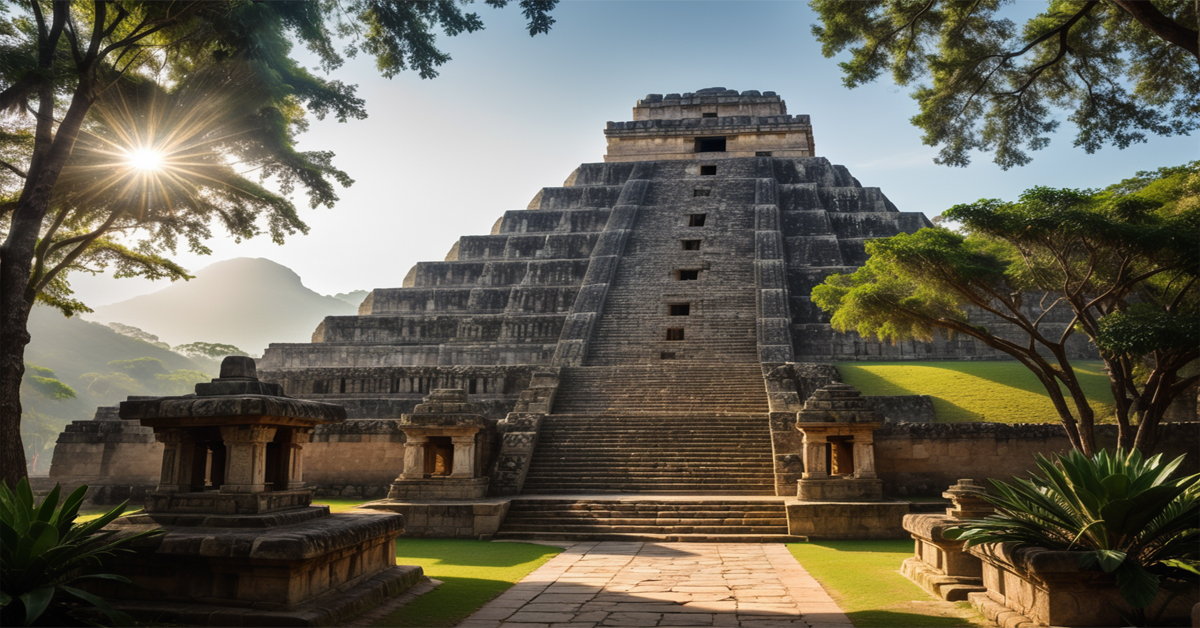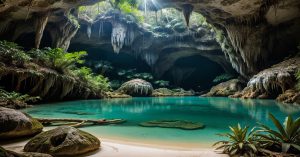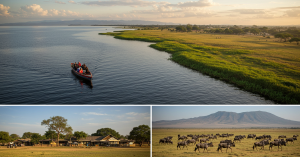The Magic of Mexico: Discovering the Country’s Most Sacred Sites
Introduction
Mexico is a country rich in history, culture, and spirituality. From ancient ruins to vibrant festivals, the sacred sites of Mexico offer a profound glimpse into its past and present. Whether you’re a traveler seeking spiritual enlightenment or simply curious about Mexican culture, this article will help you discover some of the most sacred sites in Mexico.
The Importance of Sacred Sites in Mexican Culture
A Blend of Indigenous and Spanish Influences
Mexican spirituality is a tapestry woven from indigenous traditions and Spanish colonial influences. This blend has created a unique cultural and religious landscape that is both diverse and deeply rooted in history. Many of the sacred sites in Mexico are places where these two worlds intersect, offering visitors a chance to experience the country’s rich spiritual heritage.
The Role of Pilgrimages
Pilgrimages are an essential aspect of Mexican spirituality. Every year, millions of Mexicans travel to sacred sites to fulfill religious vows, seek healing, or offer thanks. These journeys are often marked by rituals, prayers, and community celebrations, making them a vital part of the cultural fabric of Mexico.
Top Sacred Sites in Mexico
1. Teotihuacan
Teotihuacan, located just outside Mexico City, is one of the most significant archaeological sites in the world. Known as the “City of the Gods,” it was once a thriving metropolis and a center of religious activity. The Pyramid of the Sun and the Pyramid of the Moon are the most iconic structures here, drawing visitors from all over the globe.
The Pyramid of the Sun
The Pyramid of the Sun is the largest structure in Teotihuacan and one of the largest pyramids in the world. Climbing to the top offers breathtaking views and a sense of connection to the ancient civilizations that once inhabited this sacred place.
The Pyramid of the Moon
Slightly smaller but equally impressive, the Pyramid of the Moon offers a unique perspective on Teotihuacan’s layout and its ceremonial significance. It is believed to be dedicated to the Great Goddess of Teotihuacan, a central figure in the city’s spiritual life.
2. Basilica of Our Lady of Guadalupe
The Basilica of Our Lady of Guadalupe in Mexico City is one of the most important pilgrimage sites for Catholics worldwide. It is believed to be the site where the Virgin Mary appeared to Saint Juan Diego in 1531. The basilica complex includes the old basilica, the new basilica, and several other chapels and religious buildings.
The Image of Our Lady of Guadalupe
The tilma (cloak) of Juan Diego, which bears the image of Our Lady of Guadalupe, is housed in the new basilica. This miraculous image is a powerful symbol of faith for millions of Mexicans and pilgrims from around the world.
3. Chichen Itza
Chichen Itza, a UNESCO World Heritage site, is one of the most famous Mayan ruins in Mexico. Located in the Yucatan Peninsula, it was a major center of pilgrimage and ceremonial activities.
El Castillo (Temple of Kukulkan)
El Castillo, also known as the Temple of Kukulkan, is the most iconic structure at Chichen Itza. During the spring and autumn equinoxes, the pyramid casts a shadow in the shape of a serpent, a phenomenon that attracts thousands of visitors each year.
The Sacred Cenote
The Sacred Cenote is a natural sinkhole that was used for religious ceremonies and offerings. It is believed that human sacrifices were made here to appease the gods, making it one of the most mysterious and sacred sites in Chichen Itza.
4. Palenque
Palenque, located in the state of Chiapas, is another significant Mayan archaeological site. Known for its exquisite architecture and intricate carvings, it offers a deep insight into Mayan culture and spirituality.
Temple of the Inscriptions
The Temple of the Inscriptions is the largest pyramid at Palenque and the tomb of the great Mayan ruler, Pakal the Great. The temple’s walls are adorned with inscriptions that tell the story of Pakal’s reign and his journey to the afterlife.
The Cross Group
The Cross Group is a complex of temples dedicated to the worship of the Mayan triad of gods. Each temple has unique carvings and inscriptions that provide valuable information about Mayan cosmology and religious practices.
5. Monte Albán
Monte Albán, located in Oaxaca, is one of the earliest cities in Mesoamerica and a crucial site for understanding Zapotec culture. The city’s ruins include temples, pyramids, and ball courts, all offering a glimpse into the spiritual life of the Zapotec people.
The Main Plaza
The Main Plaza is the heart of Monte Albán and was the center of ceremonial and political activities. It is surrounded by temples and pyramids, each with its own religious significance.
The Tombs
Monte Albán is also known for its elaborate tombs, which were used for burials and religious rituals. The most famous of these is Tomb 7, which contained a rich array of treasures and artifacts.
Experiencing the Spirituality of Mexico
Participating in Local Festivals
One of the best ways to experience the spirituality of Mexico is by participating in local festivals. Events like Dia de los Muertos (Day of the Dead) and Semana Santa (Holy Week) offer a unique opportunity to witness the vibrant and deeply rooted traditions of Mexican culture.
Respecting Local Customs
When visiting sacred sites, it is essential to respect local customs and traditions. This includes dressing modestly, being mindful of rituals and ceremonies, and avoiding disruptive behavior. Showing respect for these sacred places enhances the experience and helps preserve their cultural significance.
Engaging with Local Communities
Engaging with local communities is another way to deepen your understanding of Mexican spirituality. Many sacred sites have local guides who can provide valuable insights into the history and significance of these places. Additionally, supporting local artisans and businesses helps sustain the cultural heritage of these communities.
As a conclusion, Mexico’s sacred sites offer a window into the country’s rich cultural and spiritual heritage. From ancient pyramids to grand cathedrals, these places are not only historical landmarks but also living centers of faith and tradition. By visiting and respecting these sacred sites, travelers can gain a deeper appreciation of Mexico’s unique and diverse spiritual landscape.




